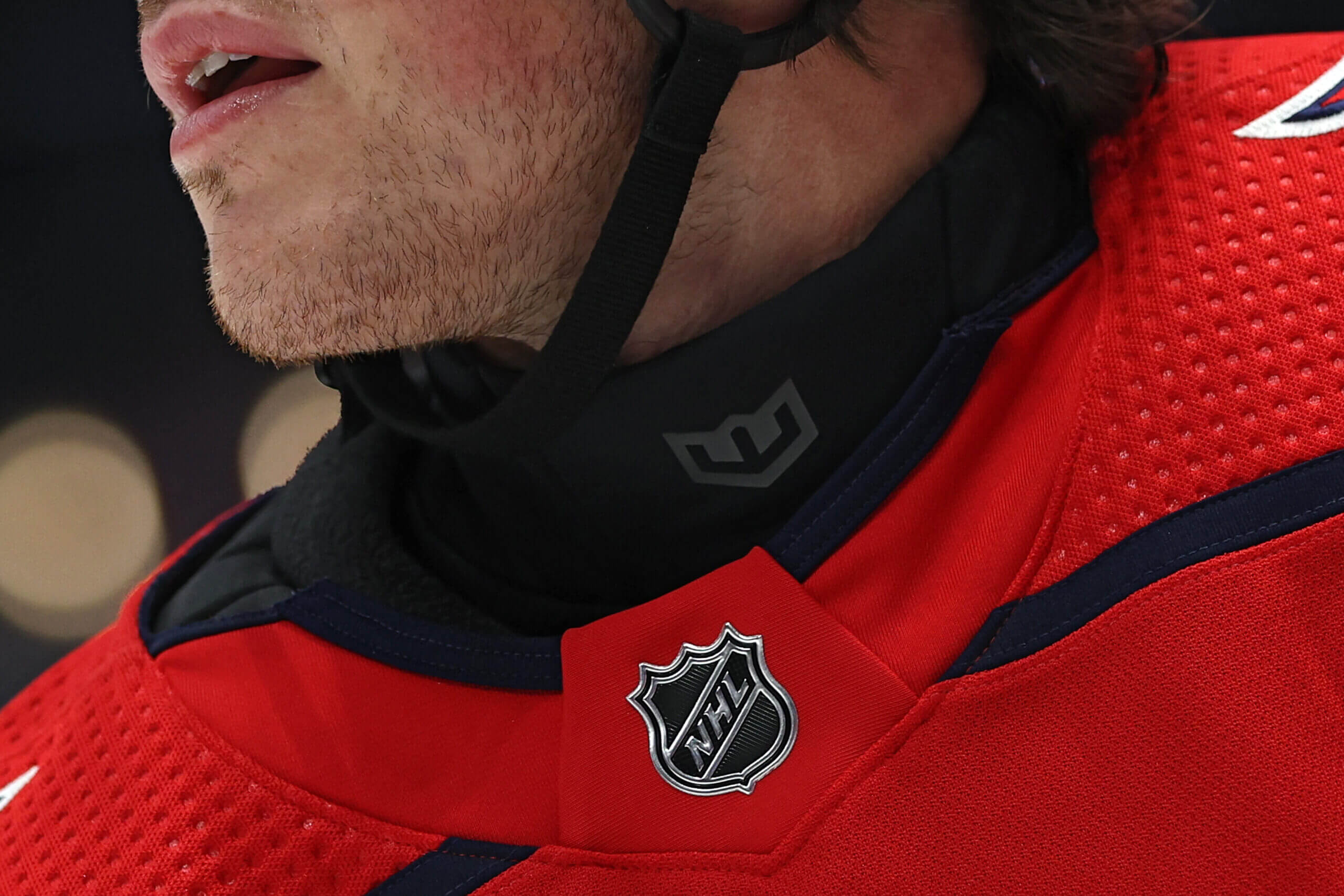
NHL player poll: Why 78 percent say there should be no neck-guard mandate
- Sports
- February 5, 2024
- No Comment
- 159
Mandatory neck guards are coming to youth hockey in the United States.
Already required in Canada and many other countries, USA Hockey, which governs the sport at the amateur level in the U.S., has long held its line at “recommending” laceration protection — namely neck guards, but also cut-resistant socks, sleeves and undergarments.
The decision was announced Sunday and will go into effect on Aug. 1, about nine months after the issue was thrust into the spotlight when former NHL player Adam Johnson died of a skate cut to the neck during a game in England.
More NHLers have begun to wear neck protection in the months since, either regularly or to try to find something comfortable.
“You’re seeing more and more of it,” one player told The Athletic. “I wear the shirt for my wrists. I think you’re going to see more and more neck guards.”
As part of our NHL 2023-24 player poll, we asked those players what their appetite might be for a similar mandate, for neck guards and other cut-resistant equipment, at the pro level.
As you can see, for the majority — 78.45 percent of the 181 who were willing to respond to that question — it’s a no-go:
For many of the players, it comes down to personal choice.
“I think it should just be your own decision,” one said.
“Guys would be smart to use them, but I don’t think it needs to be mandatory,” another added.
“It’s their own risk, right?” said a third. “It’s their life.”
Some of the players voting no indicated that, for their part, they do wear neck guards and other cut-protective gear, including one who had been cut by a skate in the past.
“I wear it. It happened to me,” he said. “I think it’s up to you. I think that there (should) be no requirement.”
“I don’t think you should require them to, but I think it’s stupid not to (wear one),” another player said. “Why wouldn’t you?”
“We’re all big boys,” said a third. “I personally wear them. But being required to? No.”
One idea many players shared was to mandate laceration protection at minor and youth levels first, with the idea of eventually bringing it to the NHL as players get more used to wearing the equipment.
“In the NHL, I don’t think it should be required,” one player said. “But in minor hockey, I think it should.”
“If the NHL mandated it, I’d be OK with that,” said another. “But they should grandfather in everyone who’s used to not playing with it, like they did with visors.”
Some players indicated they’re not satisfied, at this point, with the engineering of skate-cut protection.
“I think we all know there’s an inherent risk, (but) I don’t think the skate-cut technology is where it needs to be for people to wear it comfortably,” one player said. “I don’t love the feeling of having stuff on my wrists. I tried the neck guard. I felt like it was so high and so tight. It would take a while to get used to.”
“You want guys comfortable with what they’re wearing.”
NHL teams have worked with manufacturers to provide options, and a number of players said that’s the right response.
“I think what they’re doing right now is perfect, providing more stuff,” one said.
“Should be provided, but not mandatory,” another said.
“I’m happy with it,” another said. “There’s lots of good choices. I wear the socks. After what happened to Adam Johnson, we’re all looking to maybe wear something more. That’s an eye-opener for everyone.”
With the popular sentiment among NHLers as it is, some simply said they don’t see a realistic path forward.
“I’d love to say yes, because I would love to never see anyone get cut ever again,” one player said. “But I think that’s easier said than done.”
“It would be hard to implement,” another said. “Maybe in the future.”
One player posed a scenario in which the league would mandate cut-resistant equipment for the neck, wrists and ankles for a trial period before deciding.
“Maybe if it was required for a short period of time, so everyone has to try them at least a little bit, I think a lot of guys would stick with it,” he said. “Everyone should have their own choice, but I wouldn’t be against it if they said yes.”
“I think everybody should try it,” agreed another.
Among the players answering yes, the idea of getting players used to it before making a decision was popular.
“Once everybody got used to it, I feel like no one would care to use it or not,” one player said. “Everybody would be used to it already. Obviously, when you grow up, you use it. At one point, it’s like you don’t even notice that’s there. If it was always a thing, I think guys wouldn’t care at all to use.”
“We grew up playing with it,” another said. “It never bothered me or probably anyone else, either. If they brought it back, I think it’s a thing to get used to, and it might take some time, but if you do it in the summer, no one would be bothered by it once the season starts.”
“We did it in Sweden,” said a third. “It’s easy to do it here.”
And most saying yes were in favor of phasing it in over time. New players coming into the league would be mandated, and eventually that’d be everyone.
“Maybe start at the youth hockey level and make it mandatory there,” one player said. “Kind of incorporate it over the years, sort of. I think (young) Canadian players might have to. In America, we didn’t have to.”
“I think you’ve got to grandfather it in just like they did with visors,” another said.
“I think that would be a good idea,” said a third.
(Top photo of T.J. Oshie wearing a neck guard: Patrick Smith / Getty Images)
#NHL #player #poll #percent #neckguard #mandate









